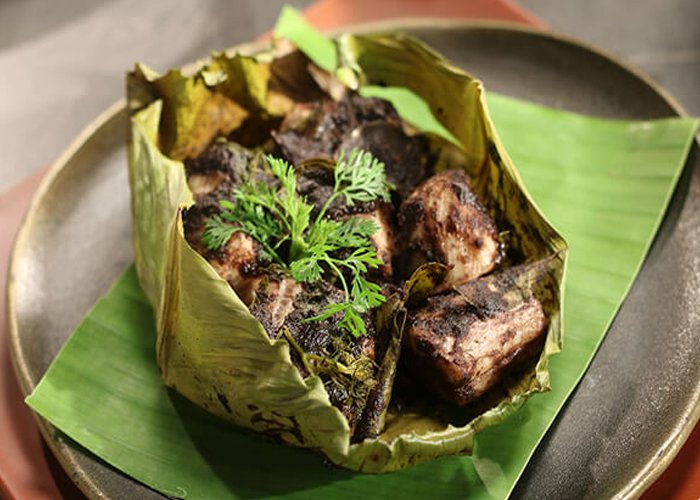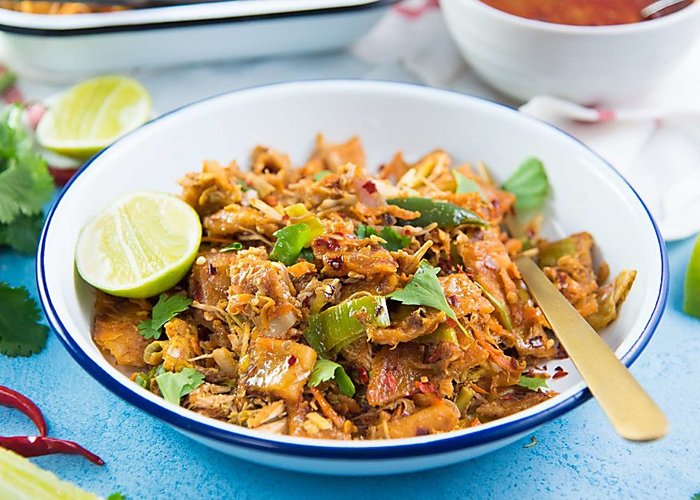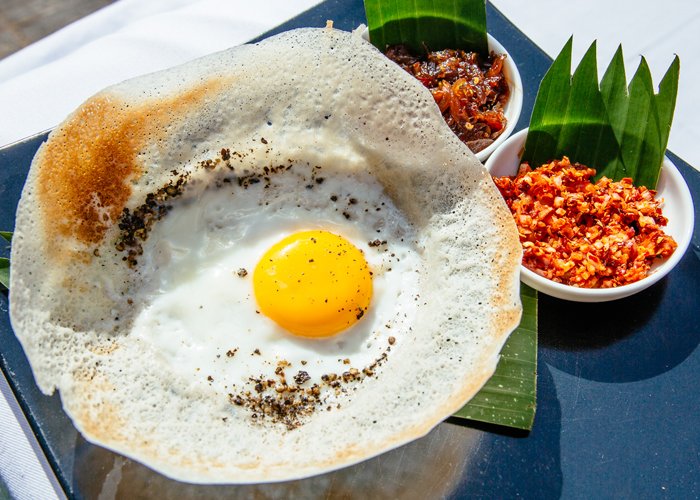Foods
- Home
- Foods
Foods
Indigenous and traditional foods of Sri Lanka inherit a long history and unique traditions continued for several thousands of years. Sri Lankan food tradition is strongly inter-wound with the nutritional, health-related, and therapeutic reasoning of the food ingredients and the methods of preparation. The diverse culinary traditions and preparations reflect multipurpose objectives combining in-depth knowledge of flora and fauna to human well-being and therapeutic health benefits. Indigenous and traditional foods of Sri Lanka present a perfect blend of cultural diversity with human wisdom that has been evolved through generations in establishing a cultural heritage and an identity. In the Sri Lankan culture, food is treated with the highest gratitude, respect, and generosity, expressed by sharing and offering to fellow humans, animals as well as divine powers. Sri Lankans love to share foods with neighbors, family, and friends; house visits are always accompanied by bundles of food items. Some foods and the preparation know-how are specialties of the locality. Trans-generational knowledge transmission of food and food ingredients is inter-woven with regular maintenance of healthy life, cultural legacy, and religious concepts of the ethnicities of the land and has been the key to sustaining a traditional food culture in Sri Lanka.

Fish Ambul Thiyal
As you’d expect from an island in the Indian Ocean, seafood plays an important role in Sri Lankan cuisine. Fish ambul thiyal (sour fish curry) is one of the most beloved varieties of the many different fish curries available.
The fish — usually something large and firm, such as tuna — is cut into cubes, then sauteed in a blend of spices including black pepper, cinnamon, turmeric, garlic, pandan leaves, and curry leaves. Perhaps the most important ingredient is dried goraka, a small fruit responsible for giving the fish a sour flavor. Ambul thiyal is a dry curry dish, meaning all the ingredients are simmered with a small amount of water and cooked until the liquid reduces. This allows the spice mixture to coat each cube of fish.
Originating in southern Sri Lanka, it’s available throughout the country at restaurants that serve curry, and is best eaten with rice.

Kottu
Over the traffic and noise at a Sri Lankan market, you’ll likely hear the clanking of metal on metal and know kottu isn’t far away. Kottu is Sri Lanka’s hamburger — everybody’s favorite go-to fast food when craving something tasty and greasy. It resembles fried rice, except instead of rice, it’s made with a type of roti known as godamba roti (a flat, crispy bread).
The roti is normally fried at the beginning of the day, piled into stacks, and served as it’s ordered. When you place an order, the kottu chef will fry and chop the roti with a selection of ingredients you choose. The result is a tasty mixture of salty pieces of fried dough, lightly spiced and extremely comforting. Kottu is served with spicy curry sauce, which you can either use as a dip or pour over your entire plate.
Some of the most skilled kottu chefs compose their unique songs, singing while they rhythmically clank their spatula and knives against the metal frying surface, slicing the roti with each clank.

Hoppers
Hoppers are the Sri Lankan answer to the pancake. The batter is made from a slightly fermented concoction of rice flour, coconut milk, sometimes coconut water, and a hint of sugar. A ladle of batter is fried in a small wok and swirled around to even it out. Hoppers can be sweet or savory, but one of the local favorites is egg hoppers. An egg is cracked into the bowl-shaped pancake, creating the Sri Lankan version of an “egg in the hole.”
Egg hoppers are garnished with lunu miris, a sambol of onions, chilies, lemon juice, and salt. Unlike the runny batter used for hoppers, string hoppers are made from a much thicker dough. The dough is squeezed through a string hopper maker, like a pasta press, to create thin strands of noodles, which are steamed. String hoppers are normally eaten for breakfast or dinner with curries.

Lamprais
Sri Lanka has been influenced by a diversity of cultures and one of the most evident is the Dutch Burgher community. Lamprais, a word that combines the two Dutch words for “lump” and “rice,” is a combination of meat, rice, and sambol chili sauce, wrapped into a banana leaf packet and steamed. The rice is cooked with meat stock — usually a combination of different meats like beef, pork, or lamb — that’s infused with cardamom, clove, and cinnamon.
A scoop of rice is placed in the center of a banana leaf, along with the mixed meat curry, two frikkadels (Dutch-style beef balls), blachan (a shrimp paste), and a starch or vegetable, usually either ash plantain or brinjals.
The package is folded into a parcel and steamed. Since lamprais is a Burgher contribution to Sri Lankan cuisine, the meat is usually prepared with sweet spices like clove and cinnamon, recreating the flavor favored by the Dutch Burgher community. Original recipes called for beef, pork, and lamb, but chicken and eggs are often included in a modern lamprais packet.

Parippu
Parippu, or dhal curry, is the most common curry in all of Sri Lankan cuisine, a staple in any restaurant or household. Masoor dhal (split red lentils) are first rinsed and boiled until soft. In a separate pan, several fresh ingredients, such as onions, tomatoes, and fresh green chilies, are sauteed and mixed with tempered spices like cumin seeds, turmeric, fenugreek, mustard seeds, and curry leaves. All the ingredients are combined and usually thickened with a splash of fresh coconut milk to give the dhal a rich flavor and creamy texture.
It goes with everything but is perfect as a dipping gravy for a fresh roti or paratha.

Kukul Mas Curry
Simple to make, chicken curry is a common household dish in Sri Lanka. Many variations are depending on region and taste preferences.
Spices like fennel seeds, cardamom, cloves, and cinnamon sticks are tempered in hot oil before being combined with chicken and spices like chili powder, curry powder, turmeric, pandan leaves, lemongrass, and curry leaves. Coconut milk contributes to the rich base of curry gravy. Depending on the recipe, a puree of tomato is often included.
The chicken is stewed for an hour or so until the essence of the spices is infused into the chicken. Most satisfying when served with hot rice and roti.

